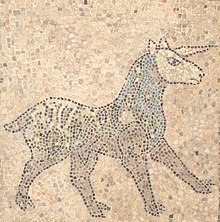The evolution of what is a unicorn in Job 39: 9-12 in the King James Version a bible that is the base of many that have replied to the answer of it's merit have a challenge with the public at-large that harbor the bible as a tool of dismay. Avid laughter at the belief in the bible has been well sought and that has brought demise to felt and left believers to the dismissal in length leaving faith to become the pain.
Job 39:9-12 KJV
As I am not a believer in delivering pain or removing faith I continue to work on evolution and the basis of time to the avenue of this Earth and it's partitions that have totaled at cost. Bringing this into 'Cantore mathematics' is the arithmetic that balances the ley lines and the flat topped pyramid in the Peruvian narrative of only Machu Picchu. To the water of Lake Titicaca I bravo the lapse as the evolution to the delivery of the palm as the grove of regard must be measure with the salt that delivered the Red Sea to the salt and well of H2O answering the Anunnaki to that wall of description that backed the Egyptian as the time period to that pyramid and text to balance this log as magnitude not using rock or dirt and just regarding evolution as the template to the actual introduction of time as the longevity of animal is known (average lifespan).
The masks on the Egyptian represent a span and the Anunnaki beard represents the Band of Holes. To aveage "broadband" as the introduction to connection it is only the fact that will be represents as Charles Darwin did the evolution of man with the missing piece being his only fault to book and chapter and the time came to the tent of his legacy. To aspect of book and not to regard or venue I only process the evolution from the unicorn to the horse for simple the "chestnut" represented by equus and represented just under the forelock as a cowlick.
Re'em
A re'em, also reëm (Hebrew: רְאֵם), is an animal mentioned nine times in the Hebrew Bible.[note 1] It has been translated as "unicorn" in the King James Version, and in some Christian Bible translations as "oryx" (which was accepted as the referent in Modern Hebrew),[citation needed] "wild ox", "wild bull", "buffalo" or "rhinoceros".[1]
Translation
The King James Version of the Book of Job followed the Septuagint and Jerome's Vulgate in the translation of re'em into unicorn:
Will the unicorn be willing to serve thee, or abide by thy crib? Canst thou bind the unicorn with his band in the furrow? or will he harrow the valleys after thee? Wilt thou trust him, because his strength is great? or wilt thou leave thy labour to him? Wilt thou believe him, that he will bring home thy seed, and gather it into thy barn?
Some Bible translations into English, including the American Standard Version and New American Standard Bible, interpret re'em as "wild ox".[citation needed]
Jewish mythology
In Jewish folklore, the re'em was larger than a mountain and could dam the river Jordan with its dung. To survive during the deluge, Noah had to strap its horns to the side of the Ark so that its nostril could protrude into the Ark, allowing the animal to breathe. King David, while still a shepherd, mistook its horn for a mountain and climbed it, and then the re'em got up, carrying David up to the heavens. He prayed to God to save him, so a lion passed in front of the re'em. As the re'em bowed down to the king of beasts, David climbed off but was threatened by the lion. He prayed again, and an animal passed by so the lion could chase it and leave David unharmed.[2]
The re'em is also mentioned in Tractate Zebahim 113b, saying in short that it took a tremendous miracle for one to actually survive the deluge. The association may be linked to the mythical beast Behemoth, described in other areas of Jewish mythology, aggada, and Kabbala due to the striking parallels between the two beasts.[citation needed]
References
- Graves, Robert; Patai, Raphael (2014). "Chapter 7: The Reem and the Ziz". Hebrew Myths: The Book of Genesis (e-pub ed.). RosettaBooks. ISBN 9780795337154.















No comments:
Post a Comment